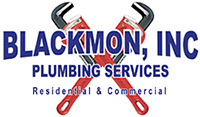How to Use Leak Detection Techniques to Improve Home Safety
In the domain of home maintenance, ensuring the safety and integrity of your water supply through effective leak detection stands as a cornerstone of responsible homeownership. At Blackmon Plumbing, we understand the critical link between leak detection and home safety. This article delves into various leak detection techniques that homeowners can utilize to not only protect their property but also enhance the overall safety of their living environment.

Visual Inspections: The First Line of Defense
Initiating regular visual inspections throughout your home is a straightforward yet powerful way to identify potential leaks. Look for signs of moisture, discoloration, or mold on walls, ceilings, and floors, especially in areas prone to dampness such as bathrooms, kitchens, and basements.
Observable signs of water damage can often indicate a nearby leak, prompting further investigation.
Monitoring Water Bills for Unusual Increases
A sudden, unexplained rise in your water bill can often signal a hidden leak within your plumbing system. Keeping track of monthly water usage and costs allows homeowners to spot discrepancies early on. If your consumption patterns haven’t changed but your bill suggests otherwise, it’s time to scrutinize your home for leaks.
Utilizing Sound to Detect Leaks
Some leaks can be detected by the sound of running water when all water outlets are turned off. Late at night or during quiet hours, listen closely for any sounds of dripping or running water emanating from walls, floors, or the foundation. This method can sometimes pinpoint the general area of a leak, especially in pressurized water lines.
The Role of Professional Leak Detection Services
While DIY methods have their place, professional leak detection services offer a comprehensive approach to identifying and repairing leaks. Specialists are equipped with advanced tools and technologies, such as:
- Acoustic Sensors: These devices can detect the sound of water escaping from pipes, even through layers of concrete or soil.
- Thermal Imaging Cameras: By identifying temperature variations in walls and floors, thermal cameras can highlight areas where leaks are cooling or warming surrounding surfaces.
- Video Pipe Inspection: For intricate plumbing systems, inserting a camera into the pipes provides a direct view of blockages, breaks, and leaks.
Implementing Smart Water Sensors and Systems
The advent of smart home technology includes devices specifically designed to detect water leaks. Smart water sensors placed near water heaters, washing machines, and under sinks can alert homeowners to the presence of moisture or leaks in real-time, often via smartphone notifications. Some advanced systems can even shut off the water supply automatically in response to detected leaks, preventing extensive damage.
Preventative Maintenance: Keeping Leaks at Bay
Beyond detecting existing leaks, implementing a routine of preventative maintenance is key to avoiding future issues. This includes regular checks of pipe insulation, ensuring proper water pressure, and replacing old or corroded pipes before they fail. Engaging with professionals for annual inspections can also catch vulnerabilities early, before they develop into significant problems.
By integrating these leak detection techniques into your home maintenance routine, you can significantly improve the safety and integrity of your living environment. Detecting and addressing leaks promptly not only protects your property from water damage but also safeguards your family’s health by preventing mold growth and maintaining the quality of your drinking water. Trust in the expertise of Blackmon Plumbing to guide and assist in making your home a safer, leak-free haven.
The Hidden Hazards: Tracing the Causes of Water Line Damage
Water line damage often lurks unseen, only revealing itself through the symptoms of its destruction. Numerous factors contribute to this pervasive issue, including natural wear and tear from aging infrastructure, the relentless invasion of tree roots seeking moisture, and the unforeseen impacts of freeze-thaw cycles in colder climates. Not to be underestimated, the role of high water pressure and chemical corrosion also plays a significant part in weakening pipes from the inside out.
Understanding these hidden hazards is crucial for homeowners aiming to protect their property from the costly and inconvenient consequences of water line damage.
Sealing the Future: Innovations in Water Line Repair
In the face of water line damage, the path to restoration requires expertise, precision, and the latest advancements in plumbing technology. Blackmon Plumbing embodies these qualities, offering innovative water line repair solutions that minimize disruption and maximize efficiency. From trenchless pipe repair, which preserves your landscape while fixing leaks, to the utilization of durable, corrosion-resistant materials, our methods are designed for swift recovery and long-term prevention. Trust in our team to navigate the complexities of water line repair, ensuring your home’s plumbing system regains its integrity and resilience.
